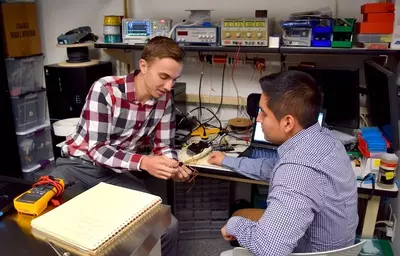Let's Work Together
Our team of experienced designers and engineers can help bring your vision to life.
The upshot: The early stages of product development are all about defining and establishing product requirements and specifications to meet the needs of your end-users. Verification and validation testing are essential to confirm that the product you end up developing meets those specifications and its intended use.
 Verification testing is used to confirm that a product meets specifications or requirements as defined in Phase Zero of the product development process. Verification testing should be conducted iteratively throughout a product design process, ensuring that the designs perform as required by the product specifications.
Verification testing is used to confirm that a product meets specifications or requirements as defined in Phase Zero of the product development process. Verification testing should be conducted iteratively throughout a product design process, ensuring that the designs perform as required by the product specifications.
Product developers achieve verification using an array of methods that can include inspection, demonstration, physical testing, and simulation.
Validation testing is confirmation that a product meets its intended use and the needs of its users. Following successful verification, development teams should employ validation testing with the initial production product and in the actual (or simulated) use environment.
Ultimately it boils down to two pretty simple ideas:
Beyond verification versus validation of a product’s design, developers can also conduct “process validation” – this is an effort to confirm that the product’s manufacturing process yields outputs that comply with the product’s specifications.
Verification and validation testing play an integral part in the product development process. Creating technology and systems is an iterative cycle, in which development teams are constantly learning and feeding data back into the process.
Verification and validation activity serve as a system of checks and balances, ensuring that developers regularly evaluate if the product is functioning as intended and meeting the needs of its users. Testing also offers an important opportunity to document the tangible results of your design efforts.
By thoughtfully and thoroughly conducting verification and validation testing, product development teams can mitigate user error and costly delays in the product’s launch schedule.
Learn more: Design Outputs: Truly Control Your Design
 Ensure that your product functions as intended and meets the needs of its users – by partnering with a product development company, verification, and validation testing can be seamlessly integrated into the product development process.
Ensure that your product functions as intended and meets the needs of its users – by partnering with a product development company, verification, and validation testing can be seamlessly integrated into the product development process.
At Goddard, our team of engineers and designers are well-versed in verification and validation testing activities for medical device development, life sciences and diagnostic systems, and high-tech consumer and industrial technologies.
From concept to production, our highly-skilled engineers and designers deliver a competitive difference with our on-site partnership model, quality commitment, collaborative expertise, and unique employee development programs.
Tell us about your project and let’s begin a conversation about creating products with technical precision and elegant design.
Our team of experienced designers and engineers can help bring your vision to life.